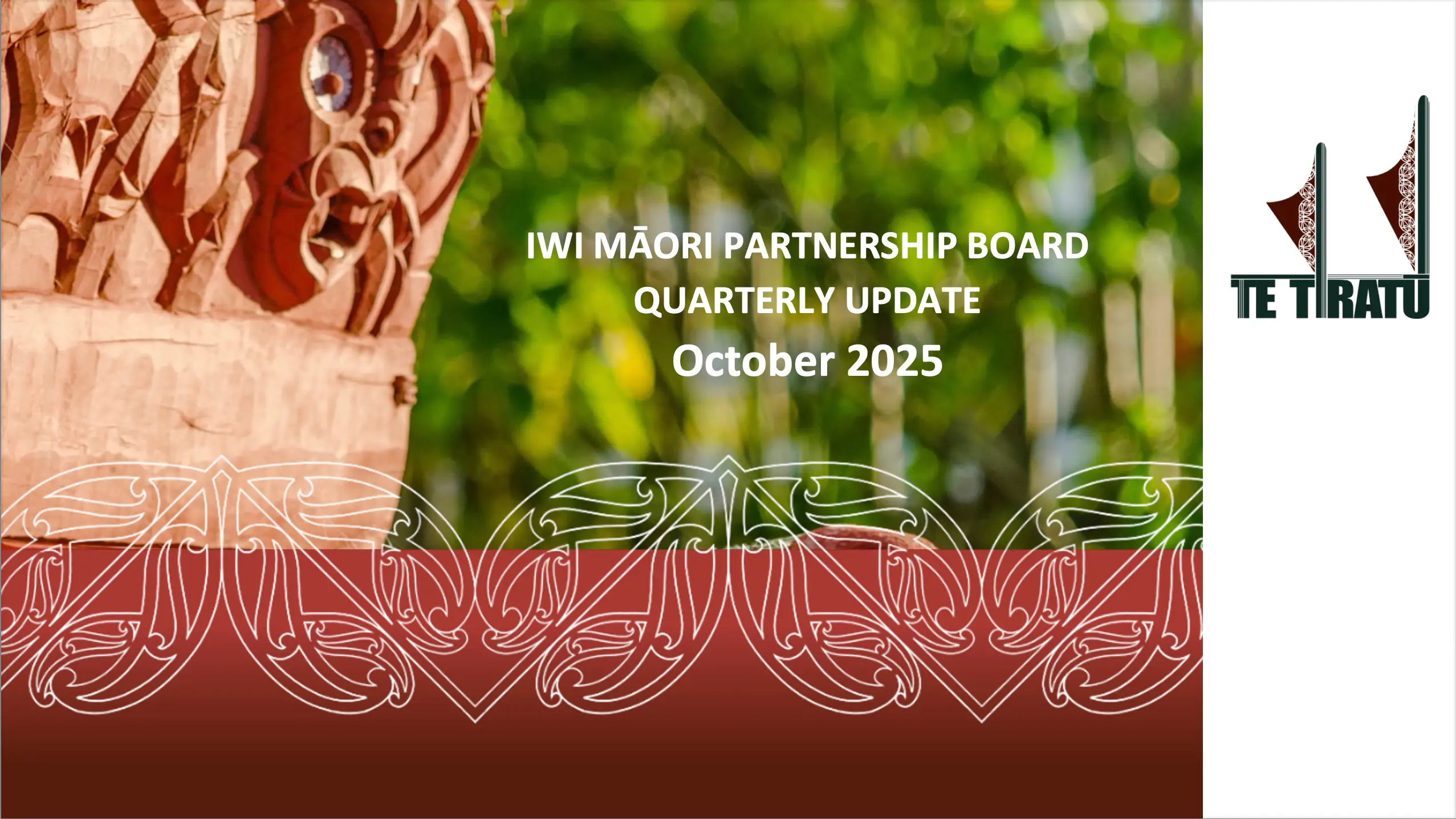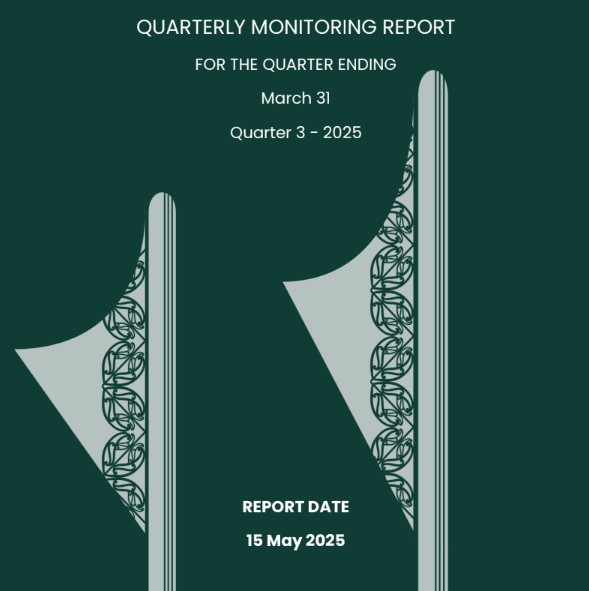Te Tiratū Iwi Māori Partnership Board quarterly report
Click the button to download a PDF version.
Position Statement – Diabetes & Podiatry
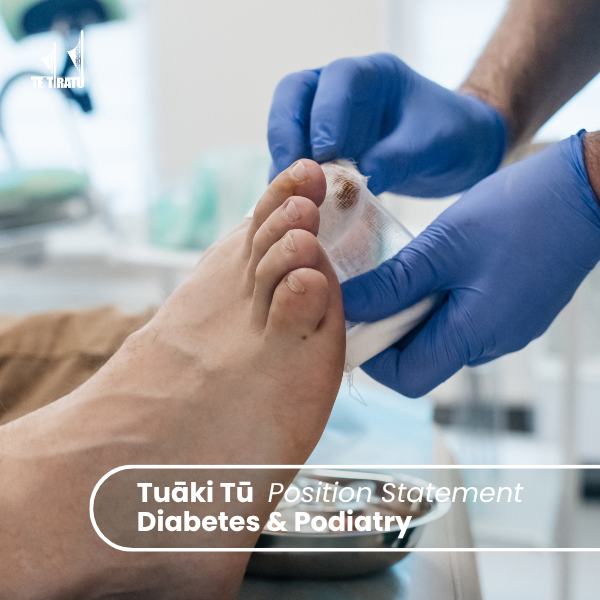
Te Tiratū Iwi Māori Partnership Board believes Diabetes-related foot disease is costing Māori their limbs, independence, and lives and driving millions in avoidable hospital costs. In the Waikato and wider Te Tiratū rohe, Māori are losing limbs at rates far higher than non-Māori.
Te Tiratū Iwi Māori Partnership Board calls for urgent action: expanding access to podiatry as both a Te Tiriti obligation and a smart investment that prevents amputations, restores mobility, and strengthens mana motuhake for whānau Māori.
Limiting high-risk patients to four funded podiatry visits per year falls short of international best practice and directly contributes to inequitable outcomes. Te Tiratū proposes funding up to eight annual visits, embedding kaupapa Māori delivery, and piloting a local pathway to demonstrate improved health and economic outcomes.
References:
• Ihaka, B., Rome, K., & Came, H. (2022). Diabetes podiatry services for Māori in Aotearoa: A step in the right direction? Journal of Foot & Ankle Research, 15(1). https://doi.org/10.1186/s13047-022-00564-1
• NICE. (2015). Diabetic foot problems: Prevention and management (NG19). https://www.nice.org.uk/guidance/ng19
• International Working Group on the Diabetic Foot (IWGDF). (2023). Guidelines on the prevention and management of diabetic foot disease. https://iwgdfguidelines.org
• Waitangi Tribunal. (2019). Hauora: Report on Stage One of the Health Services and Outcomes Kaupapa Inquiry (WAI 2575).
• University of Otago & PwC. (2016). The economic and social cost of type 2 diabetes.
• Taupua Waiora. (2010). Feet for Life: An intervention trial for Māori at risk of diabetes-related lower limb pathology. AUT University.
• Patel, S., et al. (2022). The economic value of podiatry service in limb salvage alliance. Journal of Vascular Surgery, 75(4).
• CDC. (2023). Foot care for people with diabetes.
• StatPearls. (2023). Diabetic foot examination and management.
• PwC. (2020). The social and economic impact of improved oral health.
Position Statement - Rangatahi Māori Mental Health
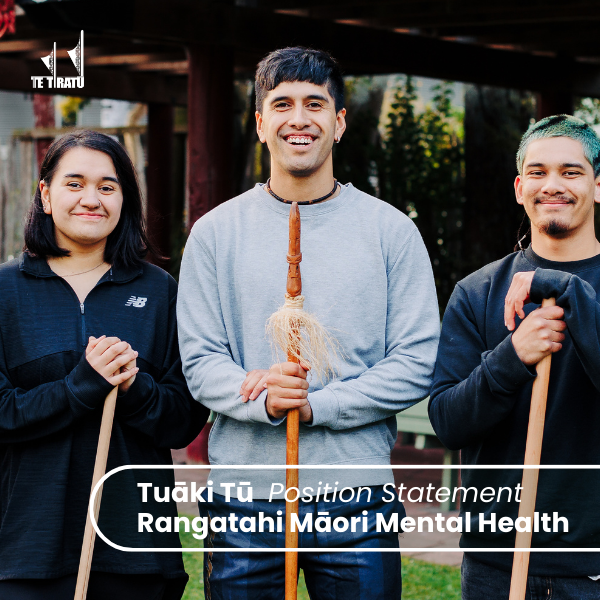
Te Tiratū Iwi Māori Partnership Board has issued a strong warning that rangatahi Māori in rural Waikato are facing a mental health crisis. Whānau in Te Kūiti, Taumarunui, and Ōtorohanga describe rising distress, suicide risk, addictions, and growing pressures on takatāpui youth. Poverty, meth use, and intergenerational trauma are adding to the burden, while services remain under-resourced and stretched beyond their limits. Too often, schools and local providers are left to call Police or St John to manage crises, highlighting the urgent gaps in care.
The Board’s position is clear: rangatahi Māori mental health is in crisis and solutions must be local, kaupapa Māori, and whānau-led. Rangatahi thrive when connected to whakapapa, whenua, and culture, yet rural isolation and systemic inequities make this harder to achieve. Whānau are calling for urgent investment in early intervention, more rural specialists, continued maternity services, stronger emergency cover, food security initiatives, safe housing, and diverse recreation options that build belonging and resilience.
With nearly half the Māori population under 25, Te Tiratū warns that without urgent action Aotearoa risks deeper social and health crises for generations to come. The Board is urging government to meet its Te Tiriti obligations, increase rural funding, and back community-led solutions that reflect rangatahi strengths and aspirations. Protecting the wellbeing of Māori youth is no longer optional — it is a matter of urgency for whānau and the future of our rohe.
Te Tiratū IMPB monitoring report
Holding a mirror to the health system
Imagine your kuia waiting months for surgery that never comes. Your mokopuna needing a vaccination but there’s no transport to the clinic. Or your cousin being turned away from help because no one knows how to awhi them in a way that’s pono.
These are not isolated experiences. They are the everyday reality for many whānau Māori across the motu. And that’s why Te Tiratū Iwi Māori Partnership Board created its very first Monitoring Report— to hold up a mirror to the health system and ask: Is it working for us? Is it honouring Te Tiriti?
The 46-page report looks at three key areas:
- Our priorities
- The Government’s national health targets
- The legal obligations of Te Whatu Ora Health New Zealand under the Pae Ora legislation
It uses data and stories to help us track how the health system is doing – and whether it’s truly honouring Te Tiriti o Waitangi.
What We Found
While there are some signs of improvement – especially in mental health – we are still far from a health system that serves our people equitably. Some of the findings are deeply concerning.
- Inequity is still everywhere. Whānau Māori face ongoing barriers like cost, travel, long wait times, and unsafe or culturally inappropriate services.
- Low screening and poor access. Screening rates for cancer are far too low, and many Māori are missing out on basic primary care.
- Gaps in the data. Key areas like immunisation, oral health, and mental health aren’t being properly measured – making it hard to hold the system to account.
- Treaty promises not upheld. We see little authentic iwi partnership in decision-making and governance – a key part of the Pae Ora legislation.
- Our Hauora Māori providers are doing the mahi – but they’re held back by inequitable funding, siloed systems, and contracting processes that don’t reflect partnership.
- On the upside – mental health and addiction services have improved for Māori in our region which shows what’s possible when whānau needs are properly listened to and resourced.
Where to Next?
Te Tiratū has shared the findings with Te Whatu Ora Health New Zealand and the Hauora Māori Advisory Committee.
We’ve invited them to consider how there can be better resourcing and use this report to inform their advice to Minister Brown on policy development, investment, and governance decisions going forward for Māori.
With the health system in flux – including the disestablishment of Te Aka Whai Ora Māori Health Authority and changes proposed to the Pae Ora legislation – we know this is a crucial time. Our commitment remains firm and unwavering: to uplift Whānau Voice, uphold Te Tiriti, shape the system so it’s fair, accessible and equitable so our whānau receive the care they deserve.
Te Tiratū IMPB hauora Māori priorities summary report
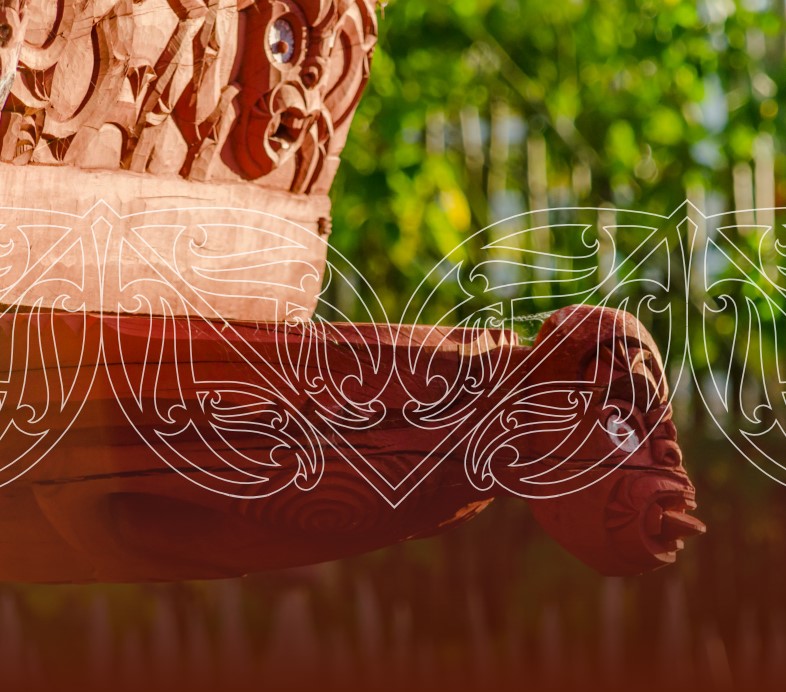
-
Public and Population Health
-
Primary and Community Care
-
Hospital and Specialist Services.
Te Tiratū IMPB community health plan
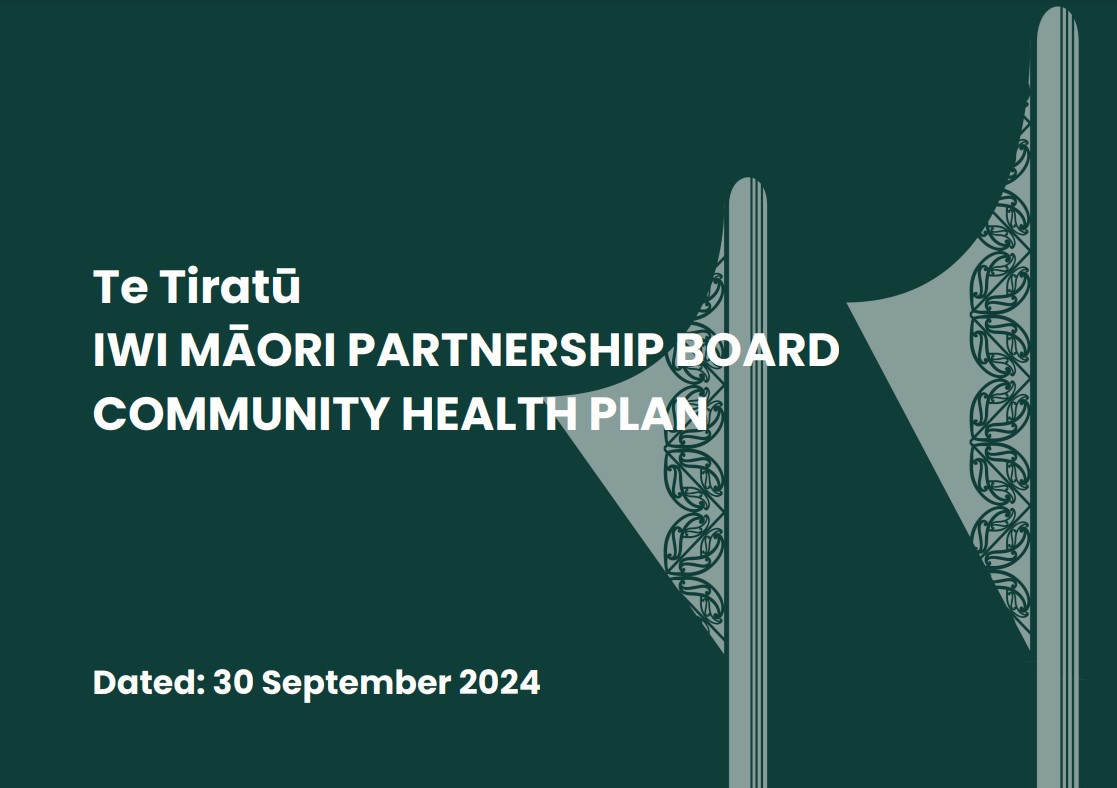
Te Tiratū will utilise this Community Health Plan to focus on a collaborative approach with Te Whatu Ora | Health NZ both nationally and regionally to improve current mainstream and Hauora Māori services to plan for a renewed focus on our priority areas identified by Te Tiratū whānau. The reason that we have organised themes from the data and whānau voice this way is that this aligns generally with how the health system is organised for instance:
- Public and population health services and programmes are overseen, funded, partially delivered and commissioned by the NZ Public Health Service (NZPHS) so it is important we engage closely with NZPHS leaders to advocate for the interests of whānau in our rohe. Their mandate includes cancer screening, health promotion, prevention and wellness, and social determinants of health
- Primary and community care is managed and commissioned (and partly delivered) by the Regional Commissioner for Te Whatu Ora | Health NZ, so it is vital that we have a strong working relationship with this leader, to ensure they and their team understand the issues facing our whānau and reflect this in their budgeting, service planning and procurement practices.
- We also need to have a strong relationship with leadership for hospital and specialist services in the district, to influence the quality of care for Māori, as well as equity of access, utilization and outcome. For instance, a key area for discussion with both the hospital leadership and PHOs will be to undertake a ‘deep dive’ into emergency department presentations and to determine how much of this is impacted by lack of access to primary care.
- Enablers such as workforce development and quality data / information have dedicated leaders and teams at both national and regional levels, and it will be important that we use the information that we have gathered and documented, to influence their planning and resourcing.
Te Tiratū IMPB health profile volume 2 additional indicators

TE TIRATŪ MĀORI HEALTH PROFILE VOLUME TWO
We are pleased to present Volume Two of the Iwi-Māori Partnership Board Health Profiles. Together with Volume One, completed in late 2023, these two reports represent the most up-to-date snapshot of Māori health for the health sector.
We acknowledge the legacy of work associated with Māori-led health data reporting to date, from the seminal Hauora series to Tatau Kahukura and the 2015 District Health Board Māori Health Profiles, this volume continues the commitment to excellence that Māori communities and whānau both need and deserve.
Volume One includes key demographic information, mauri ora (overall health status), whānau ora (healthy families) and wai ora (healthy environments) indicators specific to each Iwi-Māori Partnership Board.
Volume Two presents additional indicators focused on Te Aka Whai Ora-identified health priority areas including kahu taurima (early years), māuiuitanga taumaha (long-term conditions), mate pukupuku (cancer), oranga hinengaro (mental health and addictions) and ko ētahi atu tohu pūnaha (other system indicators) specific to each Iwi-Māori Partnership Board.
The data presented within these profiles are a dimension of ‘whānau voice’. They represent Māori stories and Māori lived experience and should be valued as a taonga for the health system to use and respond to as part of the broader commitment to Te Tiriti o Waitangi and equity.
The data presented in these profiles also require contextualisation – they are a starting point for Iwi-Māori Partnership Boards to interpret, together with other sources of information, and decide how best to respond to the needs (and rights) of the whānau within their rohe.
As the health sector transforms itself, Iwi-Māori Partnership Boards will play a pivotal role in understanding how the health sector is performing to meet the needs and aspirations of whānau in their area. This profile completes a commitment from Te Aka Whai Ora and Health New Zealand – Te Whatu Ora to provide Iwi-Māori Partnership Boards with data analysed from a Kaupapa Māori epidemiology positioning.
As Te Aka Whai Ora as an entity is disestablished, the commitment from Health New Zealand – Te Whatu Ora to continue this important work remains.
Te Tiratū IMPB health profile volume 1 key indicators
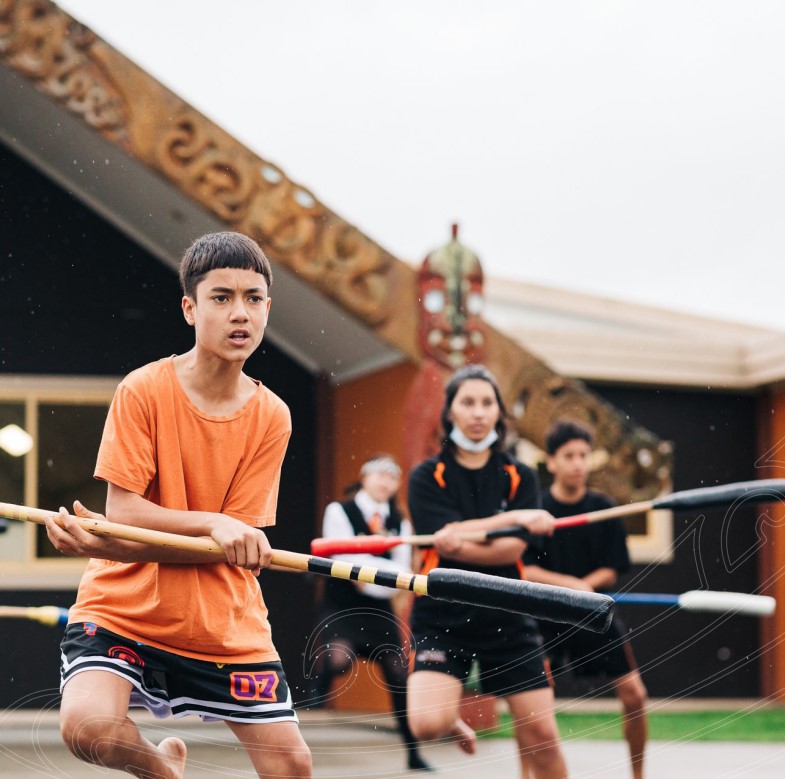
Demography
- In 2023, Te Tiratū IMPB was home to an estimate of 114,900 Māori, comprising approximately 25% of
the IMPB’s total population. - The Māori population of Te Tiratū is youthful, with 48% of the Māori population under the age of 25
years (compared to only 27% of the non-Māori population in the area) in 2023. - Over the next two decades, the Māori population is expected to grow to an estimated 156,770 (29% of
the total IMPB population) and to be older – 10% of the Māori population with be 65 and over, compared
to 7% in 2023. The non-Māori population of Te Tiratū will decrease its share of the total population,
from an estimated 75% to 61% by 2043. - Most Māori in Waikato DHB (62%) live in urban areas, with 38% living in rural areas, compared to 66%
and 34% of non-Māori, respectively.
Mauri ora – Overall health status
Life expectancy
- Life expectancy at birth for Māori born in Te Tiratū between 2018-22 is 76.8 years for females and 72.8 years for males.
- Life expectancy is 7.9 years shorter for Māori females and 8.3 years shorter for Māori males, compared to non-Māori.
- In Te Manawa Taki in 2018-20, the region in which Te Tiratū are situated, life expectancy for Māori was 75.0 years, 8.1 years lower than the non-Māori/non-Pacific population (83.1 years).
- Among Māori in Te Manawa Taki, 2.7 years of the 8.1-year gap can be attributed to conditions that are considered both amenable (through access to high quality health care) and preventable (through public health interventions), followed by 1.4 years from conditions considered preventable only and 0.9 years from conditions considered amenable only. An additional 2.0 years can be attributed to conditions that are considered non avoidable.
- The leading avoidable causes of death that contribute to the life expectancy gap among Māori in Te
Manawa Taki are lung cancer, coronary disease and diabetes.
Self-assessed health
- In 2018, 78.3% of Māori aged 15 years and over reported their own health status as good, very good or excellent, similar to the percentage to Māori nationally (82.3%). A total of 21.7% of Māori in Te Tiratū reported their health status as fair or poor.
Mortality – deaths
- From 2014 to 2018, the leading causes of death for Māori in Waikato DHB were ischaemic heart disease, lung cancer, diabetes, chronic obstructive pulmonary disease (COPD) and cerebrovascular disease. These are the same five leading causes of death for Māori nationally. This pattern differs to the leading causes of death for non-Māori in Waikato DHB, which were ischaemic heart disease, dementia, cerebrovascular disease and lung cancer in 2014-2018.
- In 2014 to 2018, leading causes of death for Māori females were lung cancer, ischaemic heart disease, COPD, diabetes and cerebrovascular disease; and for Māori males, were ischaemic heart disease, lung cancer, diabetes, COPD and cerebrovascular disease.
- The all-cause mortality rate for Māori in Waikato DHB (336 deaths each year per 100,000 people) was 2.1 time higher than that of non-Māori in 2014 to 2018. This equates to an average of 213 Māori females and 248 Māori males dying each year in Waikato DHB.
- Potentially avoidable death (those deaths considered preventable through high quality health care or public health interventions, or both) was 2.45 times higher for Māori aged 0 to 74 years compared to non-Māori in Waikato DHB in 2014 to 2018.
- In 2014 to 2018, the leading causes of potentially avoidable death for Māori in Waikato DHB were ischaemic heart disease, lung cancer, diabetes, COPD and cerebrovascular disease. These are similar to Māori nationally. For Māori females in the region, leading causes were lung cancer, COPD, ischaemic heart disease, breast cancer and diabetes and for males, leading causes were ischaemic heart disease, lung cancer, diabetes, suicide, and motor vehicle accidents.
- Potentially avoidable death from diabetes was 6.5 times higher for Māori aged 0 to 74 years compared to non-Māori in 2014-18 in Waikato DHB.
- Potentially avoidable death from lung cancer was 4.0 times higher for Māori aged 0 to 74 years compared to non-Māori in 2014-18 in Waikato DHB.
- Potentially avoidable death from COPD was 3.9 times higher for Māori aged 0 to 74 years compared to non-Māori in 2014-18 in Waikato DHB.
- Potentially avoidable death from ischaemic heart disease was 3.0 times higher for Māori aged 0 to 74 years compared to non-Māori in 2014-18 in Waikato DHB.
- On average, there were 38 potentially avoidable Māori deaths under age 75 years each year from lung cancer, and 38 from ischaemic heart disease in Waikato DHB.
Whānau ora – Healthy families
- In 2018, most Māori (67.3%) in Te Tiratū reported their whānau was doing well compared to 73.6%
nationally. About a third (32.6%) reported that their whānau was not doing well. - 76.9% of Māori in Te Tiratū reported it was easy/very easy to get support in times of need compared
to 78.1% of Māori nationally. - Being involved in culture was important (very or quite) 47.8% of Māori in Te Tiratū in 2018 and
spirituality was very important (very or quite) to 50.4%. - A quarter of Māori (25%) aged 15 years or over in Te Tiratū reported using te reo Māori regularly in the
home in 2018. - Almost all Māori (97%) in Te Tiratū had been to a marae at some time. 84.1% had been to an ancestral
marae at some time, 46.2% had been in the last 12 months, and 64% reported that they would like to
go more often. - In 2018, 14.2% of Māori in Te Tiratū had taken part in traditional healing or massage in the last 12
months.
Wai ora – Healthy environments
Education
In 2018, 62.9% of Māori in Waikato DHB aged 20 years and over had at least a Level 2 Certificate. The proportion of non-Māori with this level of qualification was 77.1%.
Work
- In 2018, 46.6% of Māori adults aged 15 years and over were employed full time and 15.1% were employed part-time.
- In 2018, 9.7% of Māori in Waikato DHB were unemployed, twice the rate of non-Māori, and Māori were 1.2 times more likely than non-Māori to not be in the labour force.
- Most Māori adults were involved in unpaid work (89.1%).
- In 2018, Māori in Waikato DHB were significantly more likely than non-Māori to participate in unpaid work looking after a disabled or ill household (2.0 times) or non-household (1.5 times) member.
Income and Standard of Living
- Using the NZDep 2018 index of neighbourhood deprivation, 48% of Māori in Waikato DHB lived in the two most deprived deciles in 2018, compared to 21% for non Māori. A total of 5% of Māori in Waikato DHB lived in the two least deprived deciles in 2018, compared to 15% of non-Māori in Waikato DHB.
- In 2018, 11.4% of Māori adults reported often postponing or putting off a doctor’s visit, 7.2% often went without fresh fruit and vegetables, and 11.7% often put up with feeling cold, because of cost.
- Māori in Waikato DHB are significantly more likely than non-Māori to receive an income of $20,000 or less. This equated to 37.7% of Māori aged 20 years and over (21,384 people) living on an income of $20,000 or less compared to 27.8% of non-Māori in 2018.
- In 2018, Māori in Waikato DHB were 3 times more likely to be without access to a motor vehicle and 2.2 times more likely to have no access to telecommunications, compared to non-Māori.
Housing
- Māori in Waikato DHB are less likely that non-Māori to own their own home. In 2018, 68.9% of Māori aged 20 years and over lived in a home they did not own/partly own or hold in a family trust compared to 51.1% of non-Māori.
- Living in an overcrowded home (requiring at least one more bedroom) was 2.7 times more common for Māori (23.6%) than non-Māori (8.8%) in 2018.
- In 2018, 45.0% of Māori reported living in a home that was sometimes or always damp, and 37.2% reported living in a house with mould. Māori in Waikato DHB were 1.8 times more likely than non-Māori to live in a damp and mouldy home.
- Māori in Waikato DHB were 1.5 times as likely as non-Māori to live in homes without any source of heating in 2018.
- Primary Care Enrolment
- In October 2023, an estimated 82.5% of Māori in Waikato DHB were enrolled with primary care compared to 97.6% of non-Māori. This suggests 17.5% of Māori in Waikato DHB were not enrolled with primary health care compared to 2.4% for non-Māori.
